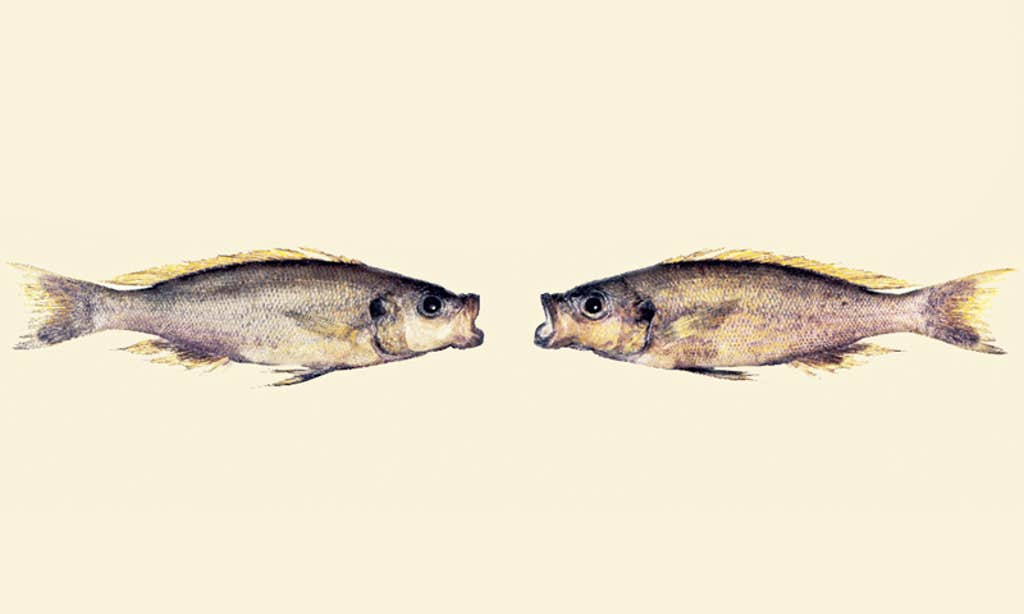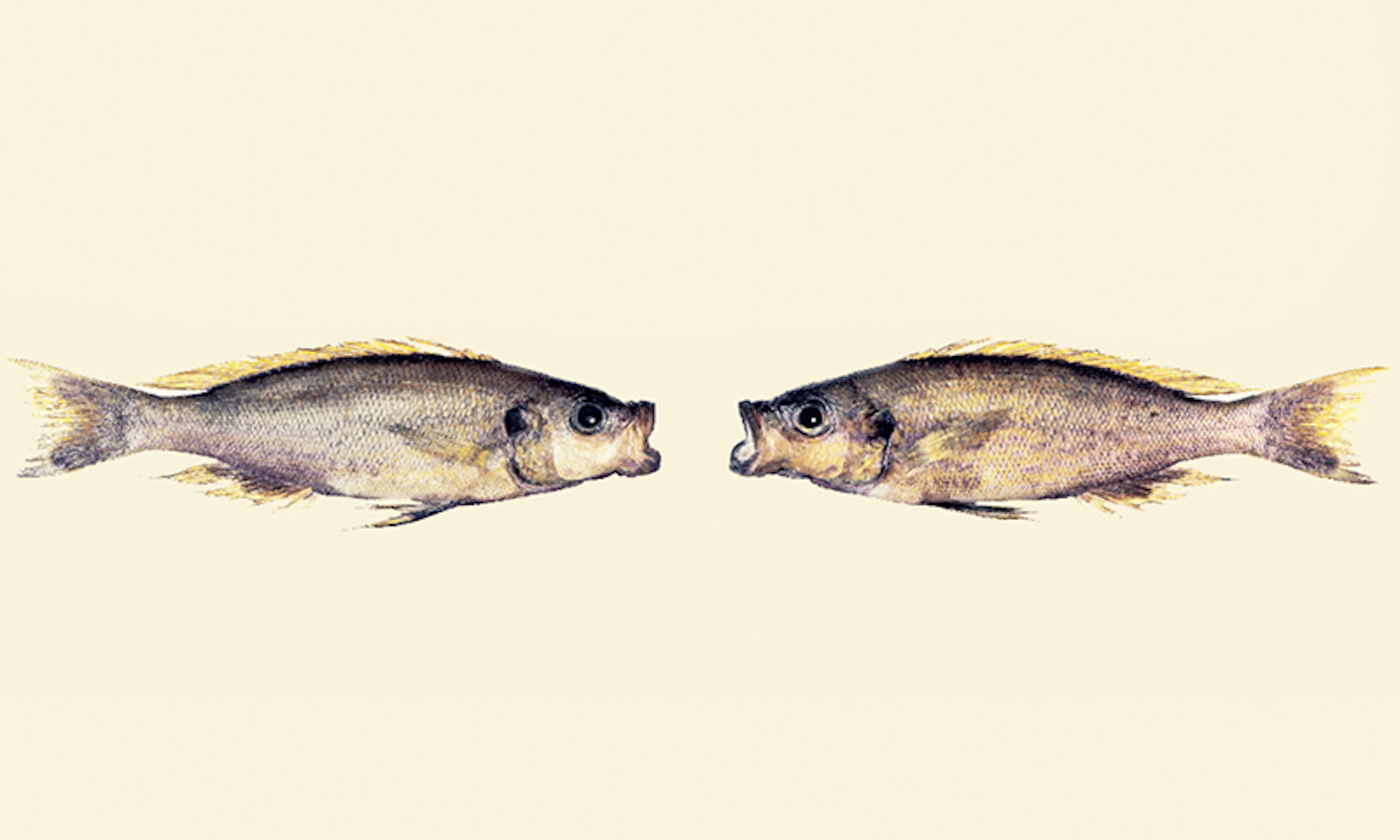Our story begins in 1954, on the shores of Lake Tanganyika in what was then Belgian Congo, with a little paper about fish diets titled “A Curious Ecological ‘Niche’ among the Fishes of Lake Tanganyika.”
The authors, biologists Georges Marlier and Narcisse Leleup, describe a little-studied species of cichlid fish. According to their findings, adults subsist mainly on the scales of other fish, which they tear off their living prey with fearsome teeth. Marlier and Leleup note that the individuals they held in an aquarium would not eat “earthworms, fish powder, or insects” or anything else they presented other than the scales of live fish.
A few decades later, the eminent Harvard fish biologist Karel Liem and his coauthor Donald Stewart investigated the mechanics of how these fish evolved to feed on scales, with a special focus on their jaws and teeth. They described a new species with notably extreme laterality (a particularly strong twisting of the head toward the left side or the right) and proposed that asymmetry in the shape of these fish’s skulls was associated with their macabre diets, likely providing an advantage in feeding. They also noted that there were similar numbers of right- and left-twisted individuals.

The laboratory work provided important insights, but it was a long-term field study, appearing in 1993 in Science by Michio Hori, then a biologist at Wakayama Medical College in Japan, that began to explain the persistence of both left and right mouth laterality in Tanganyika’s scale eaters. For most of a decade, I presented the work described in this paper every time I taught a course in evolution to undergraduate biology students. It is quite literally a textbook study.
Hori found that his study animal, Perissodus microlepis, typically attacks by striking the prey fish on the side of the body, approaching from the rear to be less visible. When he towed a prey fish behind a boat and captured wild scale eaters after they struck it, individuals attacking from the right always had a mouth with a left twist, whereas individuals attacking from the left always had a mouth that twisted right. He was also able to identify scales, from Perissodus stomachs, as having come from the left or right side of the prey based on their pore patterns. Much as with strike observations, fish with right-twisted mouths had eaten scales from the left side of their prey and left-twisted scale eaters had eaten scales from the right.
But why should the scale eater population show such exceptional variation, with the mouths of some individuals twisting visibly to the right and others to the left?
Hori’s answer—frequency dependence—and the evidence he collected to support it, are the reason the paper attracted enduring attention. Frequency dependence occurs when rare traits or strategies are more successful than common ones. It’s a principle nicely illustrated through sport.
They would not eat anything other than the scales of live fish.
When there are direct contests between individuals, a combatant-competitor can gain an advantage by having a strategy that is unfamiliar to opponents. For example, left-handed fencers, who are generally less common, will be familiar with the attacks and defenses of right-handed opponents, as right-handers are frequently encountered. But right-handers will have less experience of lefties—giving the rare left-handers an advantage. Consequently, lefties are at a higher frequency among competitive fencers than in the general population. The same goes for cricket, baseball, table tennis, and martial arts. In these highly interactive sports (and others), having the less common laterality—being a leftie—is advantageous. Success is frequency dependent, negatively so to be precise: As one’s frequency goes up, success goes down and as frequency goes down, success increases.
Hori hypothesized that scale eaters are a bit like fencers. If scale eaters always struck from one side, say, the right, their prey would only have to guard against predictable attacks from a single direction and could probably do so effectively. Any rare scale eater biting from the left should do particularly well in this situation, against unprepared prey. Of course, as lefties become more common, the prey should shift their attention accordingly. Thus the situation should lead to frequency dependence and the persistent presence of both left-and right-attacking scale eaters in the population, at something close to 50-50.
Hori was able to test for frequency dependence by taking advantage of natural ups and downs in the relative abundance of fish with right- or left-twisted mouths. About every 2.5 years, the population shifted from mainly lefty fish to mainly fish with right-twisted mouths. By looking at scars on the sides of prey fish, Hori was able to estimate the relative success of the morph that was less common. He found that, as expected, whichever twist type was less abundant left more scars and achieved more successful bites, with success rates flipping when the rare morph’s frequency increased and it became the abundant variety.
Understanding frequency dependence is essential to grasping how the most rapid diversifications in any vertebrate have occurred. These have often evolved through coevolutionary processes, much like the evolutionary tango of the scale eaters and their prey. ![]()
This article is adapted from Jeffrey McKinnon’s Our Ancient Lakes: A Natural History.
Lead image courtesy of Hori, M., et al. Dynamics of laterality in Lake Tanganyike scale-eaters driven by cross-predation. Symmetry (2019).




























